Top 13 Badass Animals And Why They’re Badass
Ready to dive straight into the thrillin’ wilderness? Well, buckle up because we’re about to embark on a ripper of a journey. Let’s explore the amazing world of nature’s true bosses – the top badass animals on this great blue planet.
From the mean streets of the outback with fearsome honey badgers to the ocean’s wild depths filled with monstrous great white sharks, we’re going to take a gander at some of the toughest, deadliest, and most fearless animals in the world.
So let’s not waffle around and head straight into the heart of the wild, discovering what makes each of these creatures truly the ultimate champions of survival. Buckle up, mates! It’s bound to be a wild ride!
Table of Contents
- Honey Badger
- Komodo Dragon
- Saltwater Crocodile
- African Elephant
- Great White Shark
- Wolverine
- Polar Bear
- Anaconda
- African Buffalo
- Tasmanian Devils
- Bald Eagle
- Pygmy Marmoset
- Cape Buffalo
Honey Badger
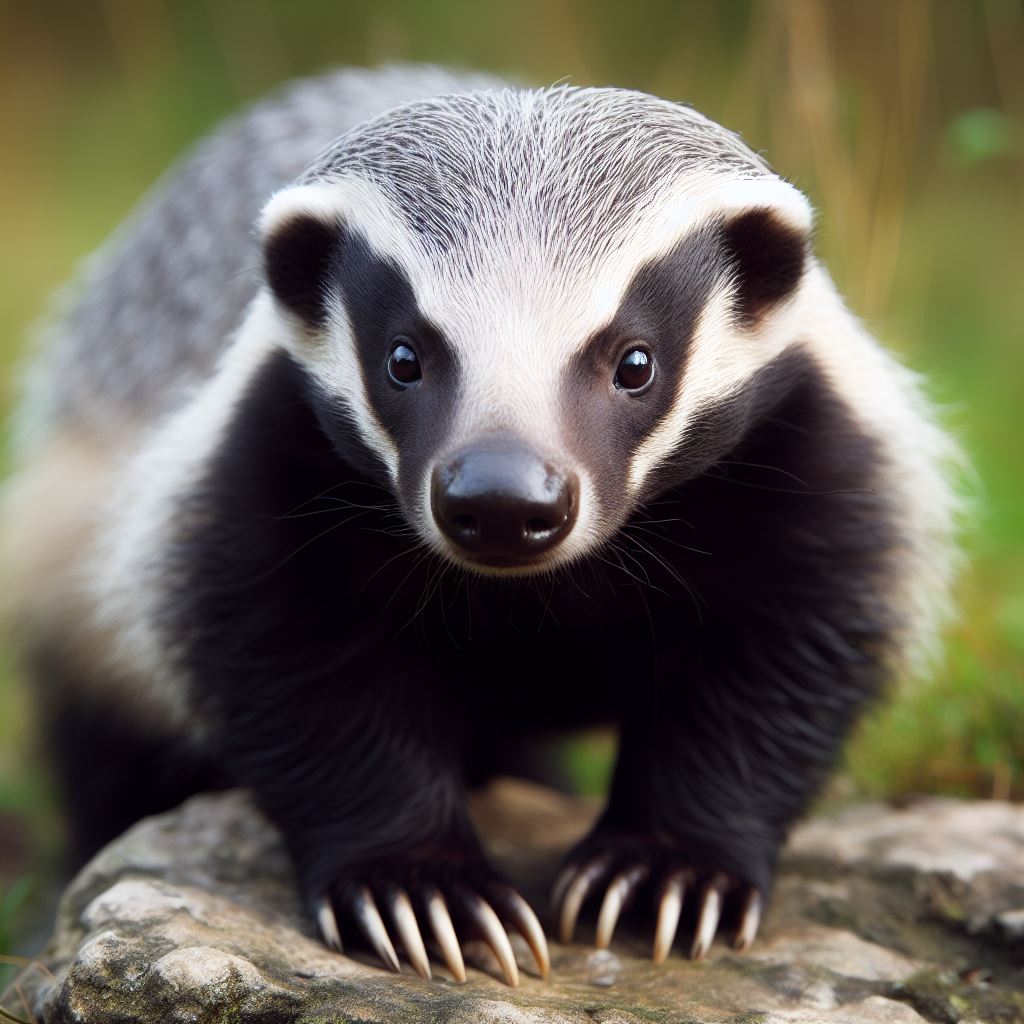
I’m sure many of you have heard about the notorious Honey Badger; but if you haven’t, you’re in for a treat! This formidable creature is not just your average mammal, nah, but a testament to survival in the harsh world of the African savannah and beyond!
The Honey Badger, or the Ratel as it’s also known, is one small creature that’s got the guts and the girth to take on any challenge that comes its way. You see, when it comes to toughness, this little bugger is right on top. It’s got a thick, rubbery skin almost a quarter of an inch thick that’s so tough, it can withstand the likes of arrows, spears, and even bites from some snakes! It is essentially impervious!
Now, you might be thinking ‘well, yeah, surviving a snake bite is impressive, but can it withstand the poison?’ And the answer is a big YES! You see, the Honey Badger is not just the bear of the honey world, its resiliency to venom is some kind of next level resilience!
Not only can it survive snake bites, it practically thrives on them! Its diet includes some of the world’s most venomous snakes, and it is seemingly unaffected by the deadly venom! It eats scorpions, bees, and wasps too! This level of resistance to toxins that would knock out other animals is due to some special protein they have. It’s basically built like a natural tank!
But that’s not all. What sets the Honey Badger apart is not just its natural armor and venom resistance, but also its never-back-down attitude. This animal is one of the most fearless creatures on our planet. It stands its ground against lions, hyenas, and even packs of wild dogs!
Contrary to its size, the Honey Badger has an impressive strength that even bigger predators fear. When it locks its jaws onto something, your best shot is to consider it gone. Its jaws are so powerful that it can break a turtle’s shell. Now that’s some force!
Not impressed yet? Well, hold onto your hats! The Honey Badger is also a superb digger. It can dig into hard ground in mere seconds, creating a burrow to escape predators or hunt its prey. And the tenacity of this critter is astounding; when blocked from the front, it will back out of its tunnel rear first, attacking anything that gets in its way!
So, what’s the takeaway from the tale of the Honey Badger? Well, mates, it’s that size is just a number, and the Honey Badger encapsulates this perfectly. It might not be the biggest critter out there, but it sure is one of the toughest. It embodies courage, perseverance, and sheer determination, proving that even the smallest of creatures can hold their ground against the biggest adversaries. What a worthy champ!
In the grand scheme of things, we can all learn a thing or two from this Badger. In life, it’s not the size of the fighter, but the size of the fight within. No wonder they always say, ‘Honey Badger doesn’t care, Honey Badger doesn’t give a…’
Komodo Dragon
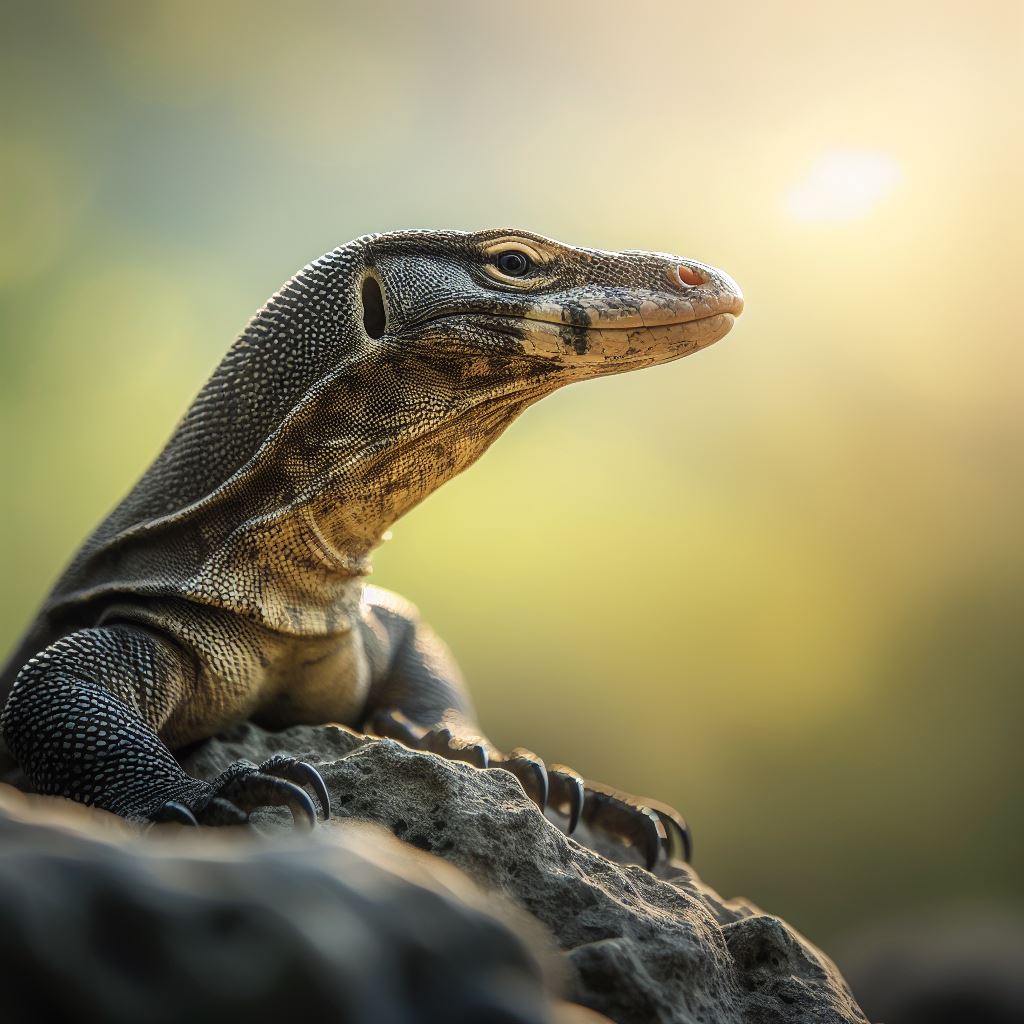
Can you imagine a raw example of evolution, where power meets instinct and results in sheer corridor of sheer awe and terror? Let’s start our journey to the Indonesian archipelago, introducing one of the most stunning and intimidating creatures to grace this Earth: the mighty Komodo Dragon!
First things first, the boldest stroke in the Komodo Dragon’s badass canvas is its tremendous size. We’re talking about a creature that can grow up to 10 feet long and weigh over 300 pounds – that’s equal to nearly five full-grown human beings! With such a size, it holds the title of being the world’s largest lizard.
However, it’s not just the size that makes this beast so awe-inspiring; it’s got the killer senses to match. Just like a snake, the Komodo uses its forked tongue to taste and sense chemicals in the air. This ability perfectly complements its excellent vision, enabling it to spot a potential meal from a distance of up to 300 meters. Now, that’s some serious hunting mojo!
The Impeccable Speed and Sturdy Jaw
Despite their huge, bulky bodies, don’t you mistake these creatures for being slow pokes. These beauts can sprint up to speeds of 20 kilometers per hour when chasing their prey. It’s an unbelievably quick and agile beast, so don’t judge it by its lounging-around demeanor!
And once their prey is in sight, their powerful jaws come into play. Armed with around 60 sharp, serrated teeth, the Komodo Dragon’s bone-crushing bite is the stuff of nightmares, literally. Imagine them chomping down on their prey with a force of up to 39 newtons. Sheesh, you don’t fancy being on the receiving end of that, would you?
The Deadly Venom and Unmatched Resilience
As if sharp teeth and a formidable bite weren’t enough, these blokes setting new standards of badassery by having venom glands loaded with toxins. So, when they bite, these toxins flow into the victim’s wound, affecting blood pressure, causing hemorrhaging, and inducing shock. They’re venomous as a snake and just as mean!
Furthermore, their ruggedness and resilience are second to none in the animal kingdom. They can survive harsh climates and tough conditions unthinkable for many creatures. And did I mention, they are incredibly resistant to most infections that would quickly knock out other creatures? They owe their immunity to a set of blood proteins that provide an astonishingly strong antimicrobial effect. Inspiring, innit?
Saltwater Crocodile
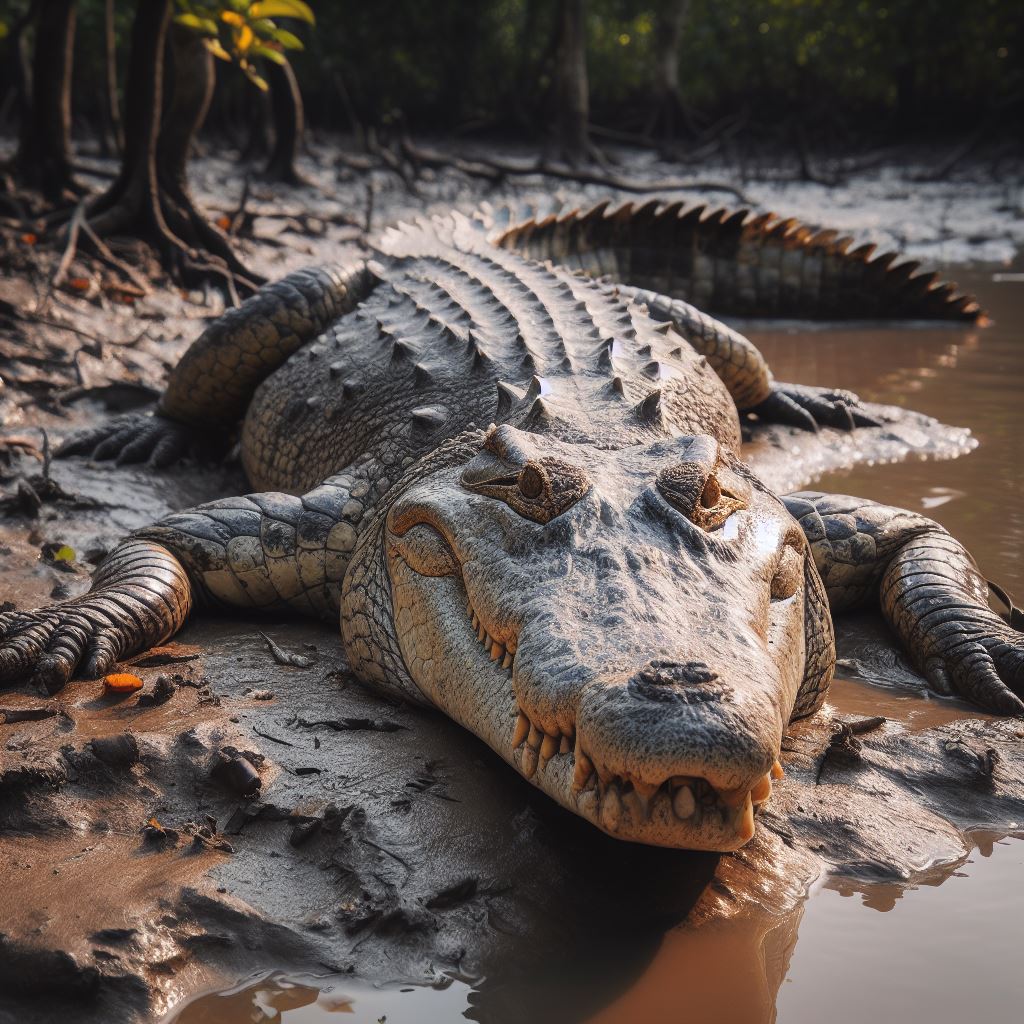
If there’s one thing the vast crocodile family does not lack, it’s diversity. But among all the species that command respect and a little bit of healthy fear, one stands out. The saltwater crocodile! Also known as “salties”, this species is the finest illustration of wild, unrefined power and survival skills. Coiled muscles shimmer under scaly armor, eyes gleaming with an ancient wisdom…
The Pinnacle of Physical Strength
The saltwater crocodile is not just a product of millions of years of evolution, but a testament to its successful survival. It’s the largest of all living reptiles, with males often reaching 7 meters in length. What’s impressive is not just its size, but the power hidden within that scaly body. No creature wants to be caught in a saltie’s powerful jaws! A bite force of up to 3,700 pounds per square inch? Bloody hell, that’s about the same force as a T-Rex! Not to mention their surprising speed, both in the water and on land. So, don’t let their slow lumbering on land fool ya, mate! When a salty decides to charge, it can cover a short distance faster than you’d think.
Survivalists Extraordinaire
Apart from their physical prowess, saltwater crocodiles are also bloody superb survivors. These creatures live in the brutal environments of the Indo-Pacific, a region that houses some of the harshest living conditions for any animal. And yet, our salties thrive here, adapted to live in both salty and fresh water. They are also opportunistic feeders, which means that they’re not too fussy about their meal. From water buffalo, to monkeys, to sharks – they’re all on the menu! There’s a reason these crocs are holding their own while other species sadly fade into oblivion.
Intrepid Parents
We’ve talked about the saltwater croc as a force to be reckoned with, but let’s not forget about their parenting instincts. These prehistoric-looking critters are surprisingly caring parents. Both the male and the female protect the nest and guard the younglings. Mama crocs are particularly vigilant, lugging the babies around in their powerful jaws and protecting them fiercely. It’s touching to see such a potent display of care from something so deadly.
In short, the saltwater crocodile has no need for fictional enhancements. It’s got everything it needs to be a genuine badass! A survivor of the test of time, an apex predator, and a loving parent, the saltwater croc is truly a marvel of nature. When you respect its space and admire it from a distance – as you surely should – you get to see one of Mother Nature’s finest creations in all its glory!
African Elephant
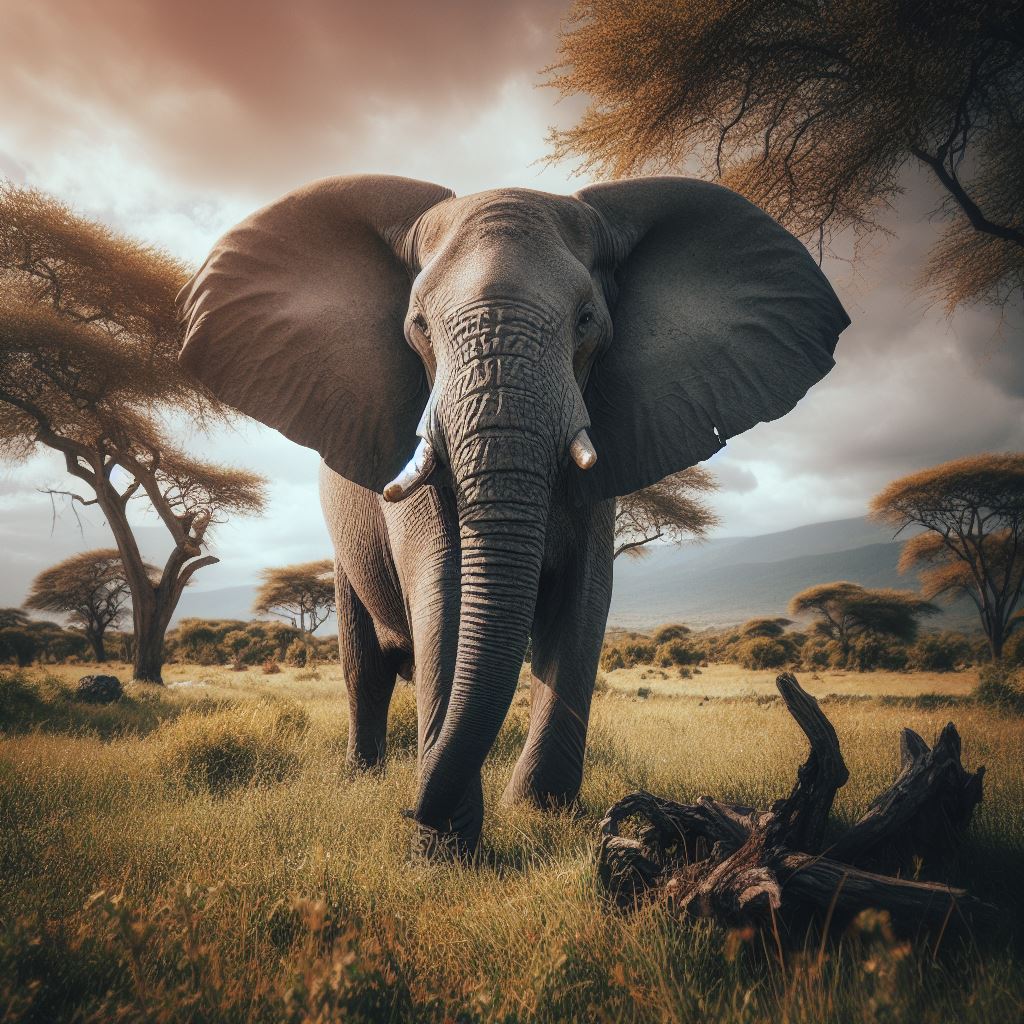
If you call yourself an animal lover, then there’s no doubt you’ve got a special place in your heart for the marvelous and magnificent African Elephant. The largest land animal in the world, this extraordinary creature is simply a testament to nature’s sheer power and majesty.
What doesn’t, mate?! Tipping the scales at a staggering 6 to 7 tons, the African Elephant stands head and shoulders above all the rest. But their grandeur isn’t just about their size – the African Elephant is tough, intelligent, and filled with surprises!
Their incredible strength and endurance aren’t just on show – these big guys can roam up to 50 miles a day in search of food and water. Quit your whining about the commute to work, am I right? They’ve got a varied diet, chowing down on all sorts of plants, fruits, and hey, they love a bit of bark too!
A telltale feature of the African Elephant, and one which gives them unmatched badass status, is their undeniably powerful and versatile trunk. This bloody cool ‘nose’ is a tool for eating, drinking, bathing, smelling, touching and – get this – even sound production. Now talk about an all in one gadget!
Not to mention, these beasts are super smart. They’ve got the largest brain of any land animal, and they know how to use it! Their memories are astounding, they mourn their dead, and have been known to show empathy. Quite the gentle giants they are!
Why is the African Elephant so Important?
Apart from being living proof that Mother Nature has a knack for the extraordinary, these leviathans play a critical role in their ecosystems. They clear pathways through the dense vegetation, making room for smaller creatures to get by. They distribute seeds through their droppings, helping to grow the flora. No kidding, without these champions, the landscapes of Africa would look quite different!
Also, their mere presence helps to control the population of certain tree species, which in turn affects the population of certain animal species. It’s a whole delicate balancing act being guided by our hefty heroes – the African Elephants.
Preserving these Giants
These elegant badasses of the wild aren’t just here for our admiration – they’re crucial to our planet’s health. Unfortunately, they face real challenges – poaching for ivory and habitat loss are only a few. We’ve got to fight to protect these beauties, because without them, not only would we be losing one of the most remarkable creatures on earth, but we’d also be disrupting an important link in the ecological chain.
We need to remember, these stunning behemoths aren’t just beautiful to watch, they’re essential to the very fabric of life on this planet. Now that’s what I call a true badass!
Great White Shark
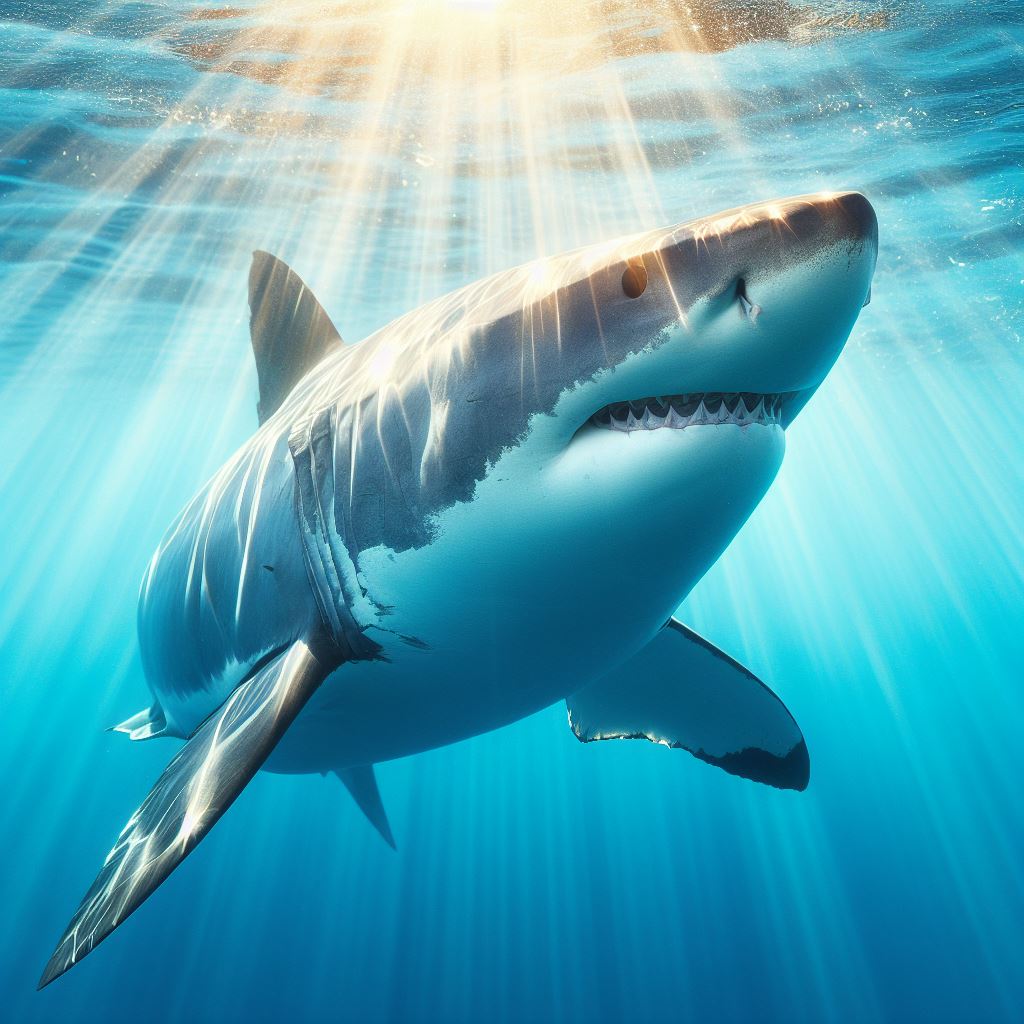
If there’s one predator that stands atop the marine kingdom, it’s the legendary Great White Shark. These creatures are apex predators, which means they have no natural enemies and are at the tippy top of the food chain. They are a living testament to nature’s impressive design capabilities.
These jaw-dropping, fin-tastic creatures are massive, with adults commonly reaching lengths of up to 4.5-6.4 meters (15-21 feet). That’s about the length of three grown men! The Great White’s size isn’t just for show either. It plays a crucial role in its survival, aiding in predator avoidance, prey capture, and temperature regulation.
A Terrifying Smile
Are you ready for a toothy grin that makes the hair on your neck stand up? Great White Sharks have an impressive set of about 300 serrated, triangular teeth, cleverly arranged in several rows. Golly, can you imagine needing to see the dentist with that many teeth? When one tooth breaks off, another one from the row behind it replaces it. So no matter how many times they bite, they always have a mouthful of sharp teeth ready to go! Just imagine the grin on this fella!
Fin-tastic Swimmers
Great White Sharks are well designed for their ocean lifestyle. They have a unique, streamlined body shape that allows fantastically efficient movement through the water, reaching speeds up to 24 kilometers per hour (15 mph). Their powerful tail fin propels them forward while the rest of their fins aid in steering. It’s like they’ve got their own built-in motorboat engines! Plus, they can leap right out of the water in an incredible display of power and agility, often resulting in their prey’s unlucky day.
Stealth Hunters
If you think ninjas are skilled in stealth, wait till you hear about these sharks. Great Whites are masters of camouflage and surprise, using a technique called “countershading.” Their dark upper bodies blend in with the murk of the deep sea when viewed from above. Conversely, their white underbellies mimic the bright surface waters when looked at from below. It’s like they’re invisible! This perfect blend of stealth and deception makes them highly efficient hunters.
Sharpened Senses
Great Whites have an exceptional array of senses. Their remarkable hearing can pick up the frequency of a struggling fish, their sight adjusts perfectly to the low light conditions of the deep ocean, and oh mate, let’s not forget their incredible ability to detect electromagnetic fields produced by other living creatures, thanks to their Ampullae of Lorenzini. It’s not just fancy science speak; Acute sensory perception sets them apart in the grand scheme of nature’s marine predators.
The Great White Shark is, without a doubt, one of the most badass creatures in the ocean. Its formidable size, highly-developed senses, awesome speed, and hunting prowess make it a truly efficient predator. However, despite their fearsome reputation, these sharks are crucial to maintaining the balance in our ocean ecosystems. So let’s appreciate these oceanic titans from a safe distance and do our part to conserve and protect them.
Wolverine
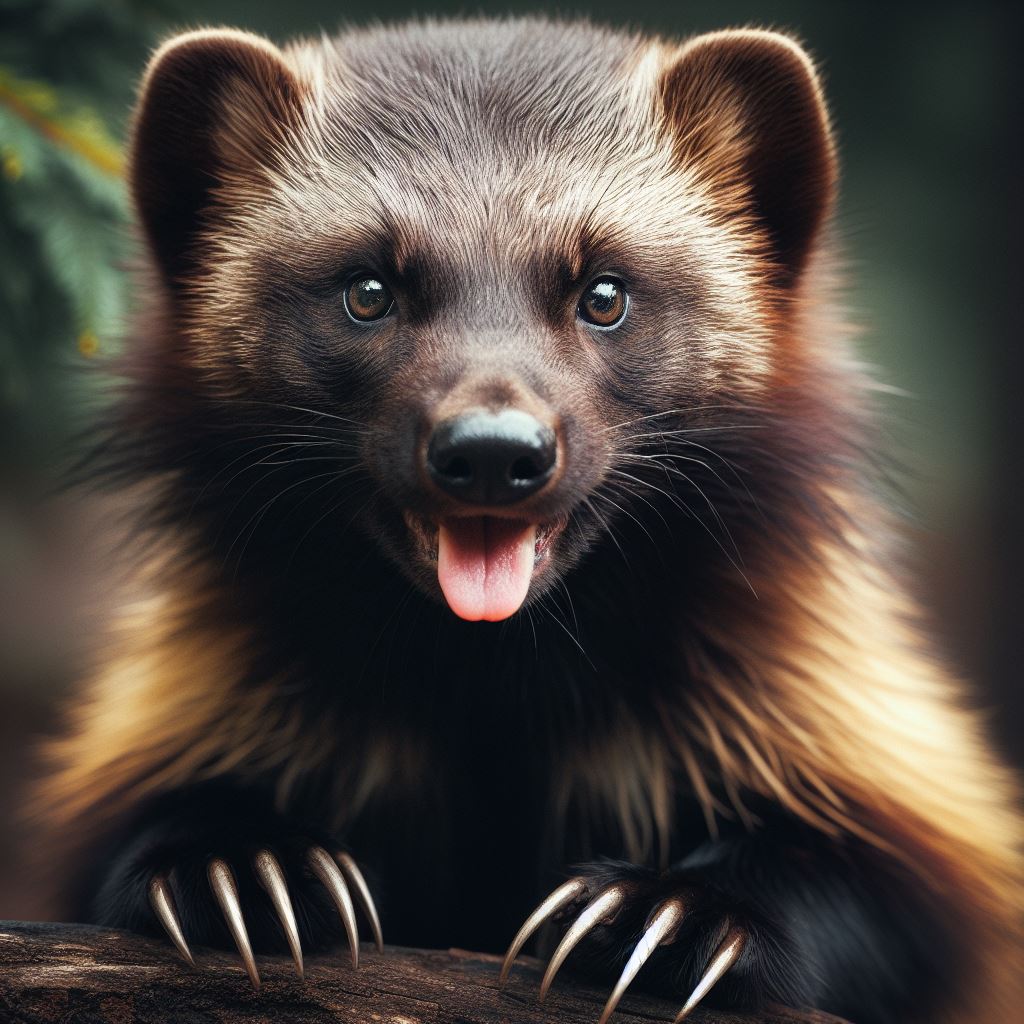
When we talk about the wolverine, you might be thinking about Hugh Jackman’s suave performance as Wolverine in the X-Men series, but today we’re talking about the real, wild, astonishing animal. If ever there was an animal that embodied the spirit of unyielding resolution and raw strength, it’s got to be the wolverine, mate!
Size doesn’t define Strength
Wolverines ain’t the biggest of critters. In fact, they’re small compared to other members of the carnivore club, weighing only about 20-30 kilos. Yet, don’t let size fool you! The wolverine boasts an impressive perfect blend of tenacity, aggression, and strength. These creatures carry enough daring attitude to take down prey many times their size. Whether it’s a caribou or a full-grown moose, when a wolverine sets its eyes on its supper, it rarely falls short.
The Incredible Adaption and Climbing Skills
These lovable rogues, full of spunk and zest, got amazing adaptability too. They’re built to endure some of the harshest and coldest climates on earth. Thick fur that’s waterproof and frost proof, broad feet that act like snowshoes, and long, strong claws that are great for digging and climbing, make the wolverine a real survivor in the rugged terrain of the Arctic. Astonishing as it sounds, you might see a wolverine joyfully rompin’ up and down the hills during the harsh cold winters. Now, that’s what I call a true mountain-goer!
The Incredibly Solitary Lives
Wolverines are solitary creatures, choosing to spend their lives mainly in their lonesome. Covering vast territories, scavenging for food and with a reputation for avoiding competition, they embody the true spirit of self-reliance and independence. This doesn’t mean they’re not great parents, though. Mother wolverines are known to provide for their little kits tirelessly until they’re old enough to fend for themselves. That’s commendable dedication, right?
Epitome of Fearlessness
Wolverines are known to exhibit indomitable spirit in standing up to threats. They’ve been known to steal a kill from larger predators like wolves and bears, which just goes to show the audacity of these remarkable beasties. That’s extreme courage under fire, mate!
The Survivor
As fierce and tough as they are, wolverines are struggling. Climate changes and habitat loss are the biggest challenges they face today. Yet, they continue to show their survival streak, just like they always have, fighting against the odds and demonstrating what true resilience is. So, the next time you hear about a wolverine, don’t just think about the comic book hero. Remember, there’s a real creature in the wild that’s just as, if not more, incredible.
Polar Bear
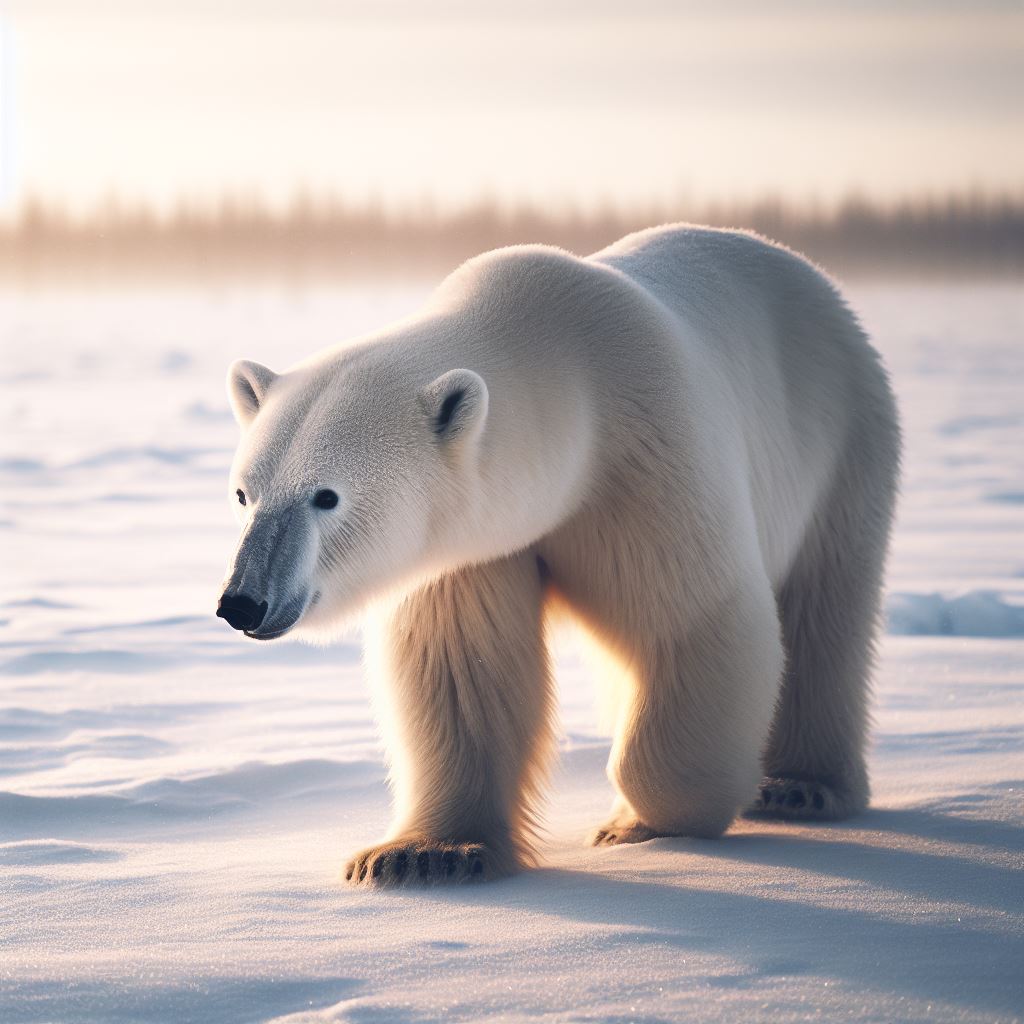
Have you ever stopped and really considered the majesty of the polar bear? I mean, these creatures are absolutely incredible! As resilient as they are magnificent, these wild beasts live in some of the harshest conditions our beautiful planet has to offer, and not only survive, but thrive. They are so much tougher than they’re given credit for!
The polar bear isn’t just a fluffy, cute creature, no siree! They are one of the absolute badasses of the animal kingdom. Just picture it – the polar bear, indigenous to the Arctic Circle, enduring temperatures that can dip as low as -45 degrees Celsius. Can you imagine? And they don’t even break a sweat, mate!
Instead, these Kingdom Animalia members are incredibly well-adapted to their icy surroundings. Believe it or not, they actually have double-layered fur to keep them warm. Even their paws are furry to provide insulation and grip on the ice.
And their size! Oh boy, these are not some average-sized bears, mates. A fully-grown male polar bear can stand up to 10 feet tall and can easily weigh in at an astonishing 680 kilograms. That’s as heavy as a small car! It makes them the largest land carnivore in the world. That’s right, WORLD!
Mind you, they’re not lumbering brutes either. These bears are surprisingly agile on land and in the water. They can run as fast as 40 kilometers per hour on land. And in the water, they transform into skilled swimmers, capable of paddling for hours to cross vast distances.
They are also supreme hunters known for incredible patience and cunning when stalking their preferred prey, the ringed seal. Blending in with their environment, a polar bear will cleverly wait near a breathing hole in the ice, then BAM! Yank the seal out when it comes up for air. Their skillful stalking and hunting behaviors qualify them as downright legendary!
But it’s not all fun and ice games. Polar bears are also looking out for the next generation. Female polar bears build themselves a den, one that can be buried under a meter or more of snow, to give birth to their young. The cubs are first nurtured in the cozy den before being introduced to the harsh Arctic world. Now, isn’t that admirable?
It takes a really unique creature to survive, let alone thrive, in such a harsh environment as the polar bear does. Battling the freezing cold, hunting on the treacherous ice, swimming icy waters, and lovingly raising their young – polar bears, mates, are the real deal!
Anaconda
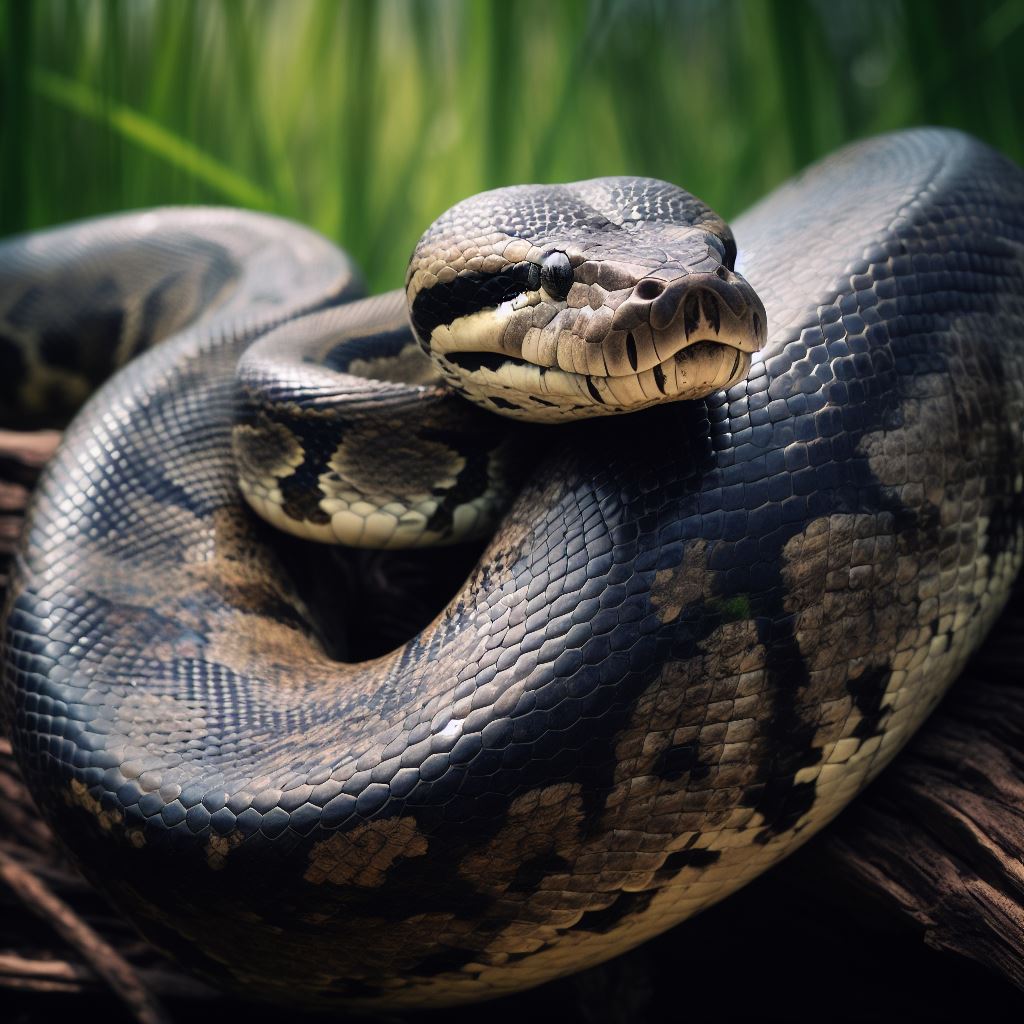
Anacondas are truly the largest snakes in the world; not in length, but in girth and weight. Think about this for a second: an anaconda can grow up to 30 feet long and weigh up to 550 whopping pounds. They’re the heavyweights of the serpent world – the kind to make even the saltwater crocs take a step back. How’s that for impressive?
But their size is barely the tip of the iceberg. These creatures are born survivors. They’ve adapted impeccably to their lush, aquatic habitats in the rainforests of South America. Just like a crocodile, an anaconda is a masterful swimmer. Thriving in both the water and land, these beauties boast a deft stealthiness that is unfathomable for their girth. Awe-inspiring, isn’t it?
Anacondas are also constrictors – meaning, they don’t use venom to immobilize their prey. Instead, they use pure, raw strength. An anaconda’s modus operandi is wrapping itself around potential meals, squeezing tighter every time the unfortunate creature exhales, until it can no longer breathe. There’s something undeniably badass about that, don’t you think?
And let’s not forget their jaw-dropping feeding capabilities. These serpents can unhinge their jaws and consume animals significantly larger than their head size – from caimans to capybaras. The act itself is an example of nature’s awesome power. This giant serpent literally morphs its body to accommodate its hefty meal.
Yet, despite their deadly prowess, anacondas are surprisingly gentle when it comes to their babies. Unlike other reptiles that lay eggs and then abandon their offspring, anacondas give live birth and often stay with their young for a while. This nurturing behavior showcases a more tender side to these otherwise intimidating creatures.
Another fascinating aspect of these snakes is their longevity. Anacondas in captivity have been known to live over 30 years. That’s akin to most parrots and even few primates. They evolve, survive, and adapt; perpetual occupants of Earth, living reducers of the process of natural selection, making them valuable contributors to their ecosystems.
Still, it’s important to remember that anacondas, like all wildlife, face significant threats from habitat loss and hunting. Preserving these mighty serpents – and their contribution to the biodiversity of the rainforest – is essential. After all, every creature has its part to play in the grand drama of life, and the anaconda is no exception.
African Buffalo
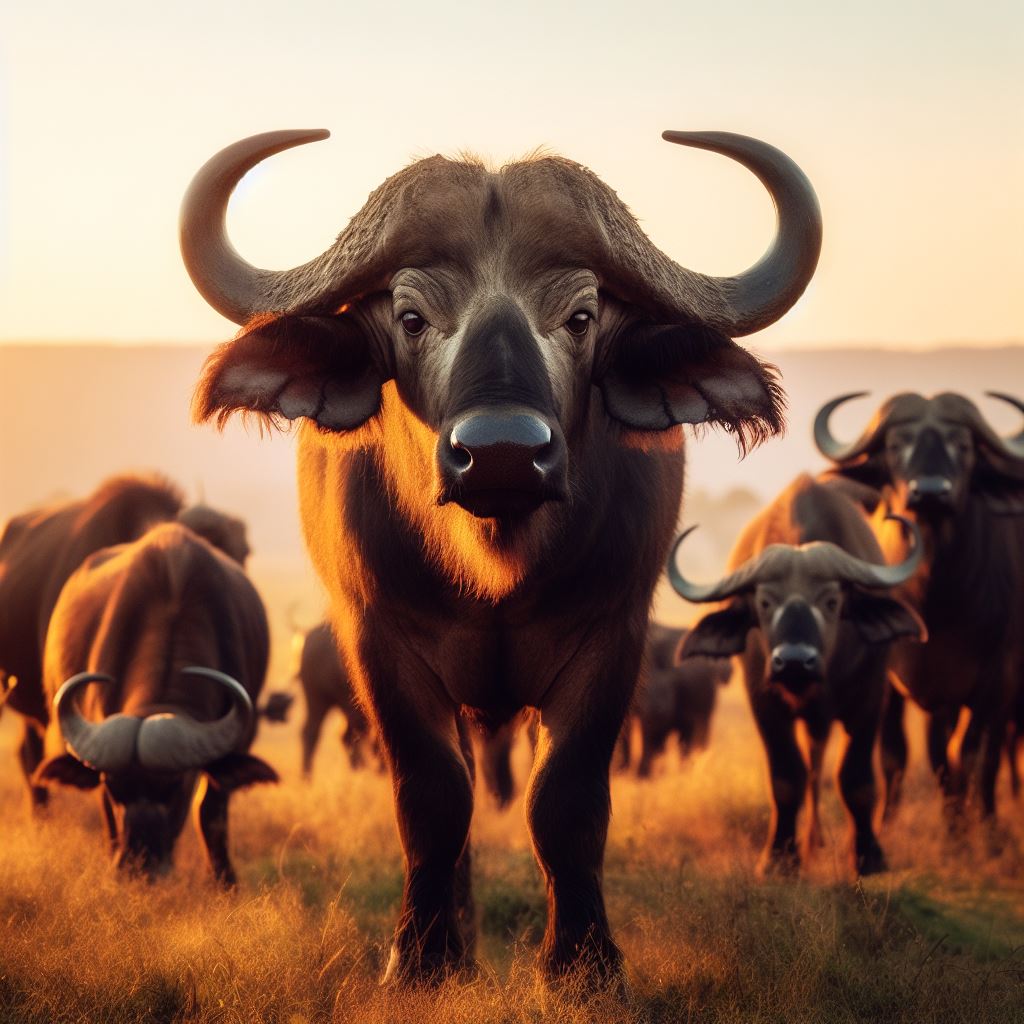
Step right up, mates, and feast ye orbs on the African Buffalo, a true titan of the wild, possessing a unique jigsaw of traits that stand testament to Mother Nature’s art of survival. Now, this isn’t one of those domesticated critters you might see mooing in a meadow. Oh no, this one’s a bona fide bad-boy of the animal kingdom. A magnificent beast with brute strength, a formidable herd instinct and an uncanny resilience, the African Buffalo not only stands hoof-to-hoof with its fiercest competitors and predators but often charges them down without batting an eye.
The African Buffalo, should you ever cross paths, is an obvious behemoth of the grasslands. With a bodyweight ranging from 300 to 900 kilos (heck, that’s heavier than a grand piano!), and standing a massive 1 to 1.7 meters tall at the shoulder, these fellows are like the hard-hitting rugby players of the wild, sporting a strong neck, broad chest and tough skin to boot, showcasing nature’s incredible design for survival.
But it’s not just about physical power with these big blokes. They are the embodiments of solidarity and teamwork too. African Buffalo herds stick together like peas in a pod. If one member of the herd is under attack – crikey! – the rest of them wouldn’t stand around chewing cud; they’d come charging like a battering ram, confronting the threat as one formidable unit. Talk about mateship!
Nobody really fancies taking on a nearly one-tonne beast with a fiercely loyal herd and a formidable pair of horns. Even the mighty lion, the king of the jungle himself, knows to tread lightly around the African buffalo. Put one lion against one buffalo, and I tell you what, it’s a fifty-fifty. The outcome usually depends on which one of them woke up on the right side of the bed that day.
And there’s another astounding fact about these bad boys: they possess a remarkable resistance to disease. The African Buffalo is resistant to many diseases that cripple other animal species in the wild. From viruses to worms to poisonous plants, these beasts have a phenomenal immune system that helps them champion the harsh pitfalls of living in the wild.
The African buffalo is, therefore, a true exhibit of nature’s resiliency, strength and unity, teaching us a powerful lesson about survival. In the face of adversities and predators, whether it be the scorching sun of the African plains or a marauding pride of lions, the buffalo doesn’t yield, but charges head-on.
Tasmanian Devils
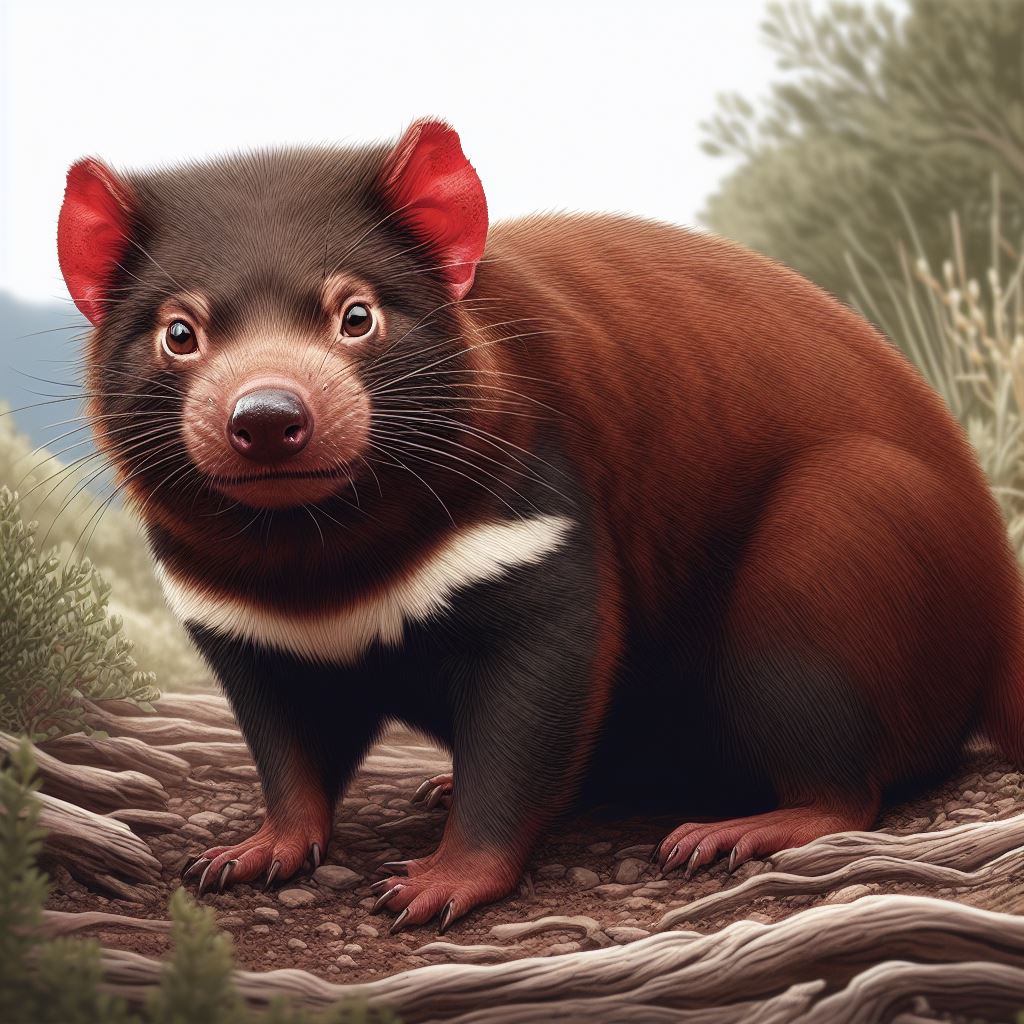
When we think about the most intrepid characters in the animal kingdom, the mind automatically runs to big cats, massive sharks, venomous snakes, or alligators. Yet, tucked away on the rugged island of Tasmania lives an unassuming yet ground-breaking creature that belies its small size with ferocious behaviour and unmatched sass – The Tasmanian Devil!
The Tasman’s Fierce Fighter
The Tasmanian Devil, or ‘Tassie Devil’ as it’s affectionately known, is no Beelzebub. But, by crikey, it’s got a fiery reputation! Unlike the mischievous Looney Tunes cartoon character, the real Tasmanian Devil isn’t spinning around in a tornado of chaos. This dark-furred carnivorous marsupial is the size of a small dog and it can put up a ferocious fight when threatened.
Living Up to the Name
Considered the world’s largest carnivorous marsupial, the Tassie Devil certainly lives up to its nefarious name for several reasons. First off, this critter has a bone-crushing bite. It can gnaw through bones and tear carcasses apart with a fervour you’d never expect from such a small creature! With a bite pressure that rivals a tiger, the Tasmanian Devil owns one of the most powerful bites in the mammal kingdom for its size. That’s totally ripping!
Devilish Behaviour
And don’t let the Tassie Devil’s size fool you. This wild critter’s endurance and speed are unmatched – they can run up to 13 km/h for a whopping hour! Their gruff, growl-like screech, particularly when they are fighting or feeding, can give anyone the heebie-jeebies and earned them their ‘devilish’ name. Remember, if it sounds like a squabble in the middle of the Tasmanian night, it’s likely a Devil feeding frenzy!
The Durable Devil
The Tasmanian Devil is an incredible survivor, displaying remarkable adaptations to environmental changes and diseases. These critters are built tough and beautifully embody the rugged charm of their island home. Their unique, ultrasonic-like sneezes, designed to assert dominance and scare off competition, are a testament to their gritty survival instincts.
Saving the Icon
Sadly, these tenacious creatures are now endangered due to a gnarly contagious cancer called Devil Facial Tumour Disease (DFTD). But don’t lose hope yet, mate! Some devils have developed resistance to DFTD, and their population is slowly recovering, showing us once again that these creatures are extraordinary fighters in the face of adversity.
Fun Facts & Fascinating Devil Insights
- Despite being nocturnal, the Tassie Devils are not picky eaters – they’ve been known to scavenge during the day when the opportunity presents itself!
- Tasmanian Devil mothers birth about 40 joeys (babies), but only the fastest and fittest make it to her pouch, which only has four teats. The rest sadly don’t survive. It’s all about survival of the fittest here!
- Got a smelly shoe? Not a problem for the Tassie Devil! They’d probably use it for bedding material in their burrow!
Bald Eagle
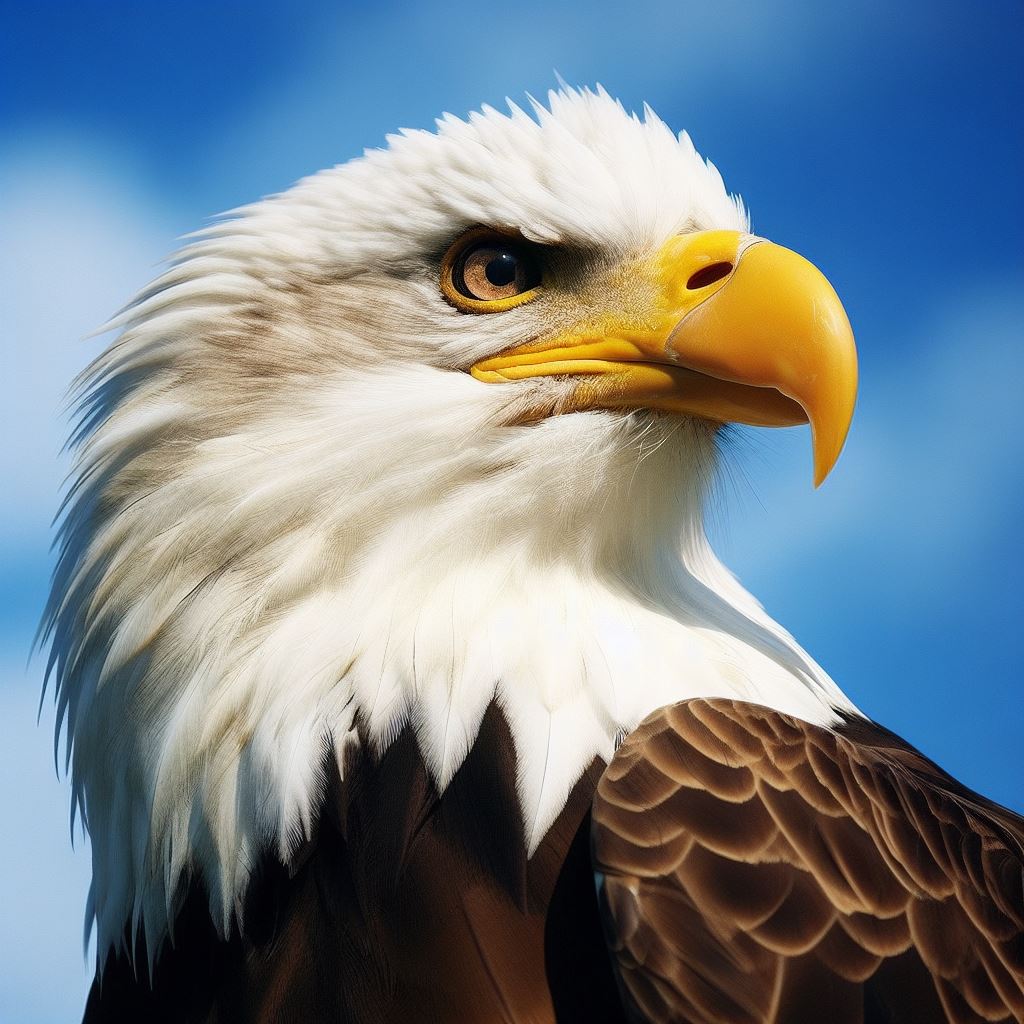
Isn’t nature trim, ace, and deadly? If you’re baffled and intrigued by the exceptional critters that inhabit our earth, you’re gonna love this ripper! Today, we’re exploring the distinctive, gallant, and widely-cherished American symbol, the robust Bald Eagle!
Size Matters: The Mighty Bald Eagle
First up, let’s bang on about their size. These blokes are colossal! An adult bald eagle stands tall – about 3 feet, not to mention wings that spread right around 7 feet. Don’t canvas a tea party with these fellas, as their wings alone could easily cover the table! It’s awe-striking to recognize this bird’s powerful physical presence with their staggering size and regal stature, making them truly badass!
The Symbol of Audacity
What makes a Bald Eagle utterly badass is being synonymous with bravery, right? They’ve been viewed as symbols of courage and freedom in many cultures over the centuries. Can you think of anything that screams ‘badass’ more than a spirit of audacity? To be fair, I reckon not!
Maestro of the Skies
These birds are exceptional flyers. A bald eagle can swoop down at speeds up to 80 miles per hour! Talk about being fast as a greased lightning! Imagine watching these living torpedoes plunge into the water in a heartbeat, grasping a fish mid-swim. Larger, heavier but assertive, their flight proficiency exemplifies precision, agility and strength, a perfect epitome of all things badass.
Deadly Hunters
Like a few proud predators in the wild, it’s their capacity for bringing the ‘kills’ that underlines their badass nature. These mates aren’t fussy eaters, they’ll take what they can get. Chiefly fish, they gladly take on anything from rabbits to geese or even deer. Yep, you heard right. When these fellas are hungry, there’s frankly no prey too large!
A Standout Look
Finally, take one look at a Bald Eagle, and you’d be hard-pressed not to reckon they’re one of the most striking birds there are. Their fierce yellow eyes and sharp beak, topped off with a proud white head and a dark brown body. Now that’s what you’d call a classic good looker in the wild! These birds wear their badges of badassery prominently!
Pygmy Marmoset
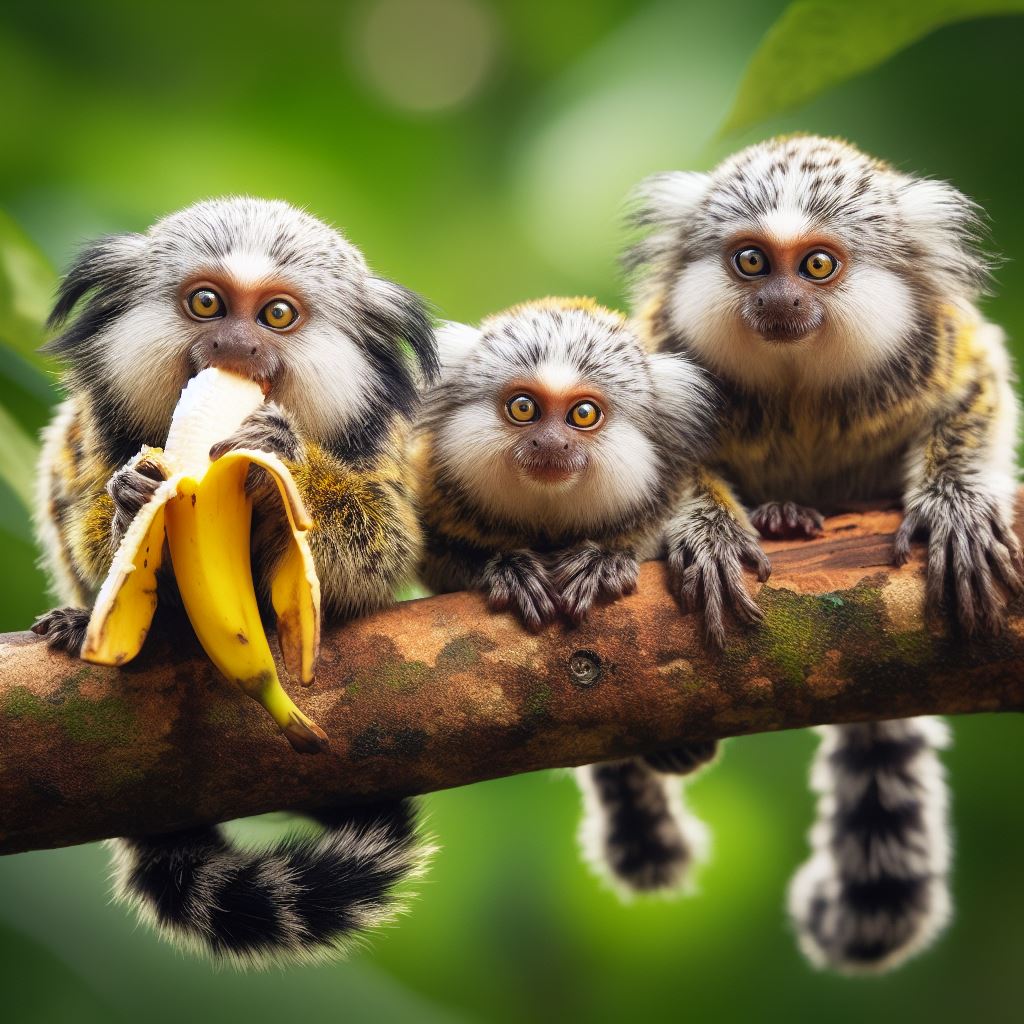
Isn’t she a beauty, mate? Meet the Pygmy Marmoset, the world’s smallest monkey and a true badass of the animal kingdom. Don’t be fooled by her cute face, or the fact she’s smaller than your hand. This tough little critter can navigate through the jungles of South America like she owns the place – and in a way, she does!
A Survivor in Disguise
A Pygmy Marmoset is so good at blending into its environment you could walk right past one without noticing it. They’ve got a lush, golden-orange fur that not only makes them look like little fireballs against the green jungle, but also allows them to camouflage perfectly with the trees. Their agile bodies and long tails give them a balance almost unreal, effortlessly leaping between branches, not just surviving, but thriving in their harsh home environment.
And did you know these little guys are omnivores? Yeah, mate! They eat everything from fruits and insects to small reptiles and one of their favourite foods… tree sap! But how do they get to it, you ask? They use their sharp lower teeth to pierce the tree bark and lick up the sap that oozes out. Imagine the patience and the grit to do that! Not so tiny in spirit, are they?
Social Badasses
Pygmy Marmosets aren’t just survivors, they’re social animals too! They live in groups of about half a dozen, normally a mating pair and their offspring. One of the most amazing things about them is they’re cooperative breeders, meaning all the members of the group help take care of the young, even the males! In fact, once the offspring are born, it’s usually the father who takes over the duty of caring for them. Incredible, isn’t it? In Pygmy Marmoset world, dads can be just as nurturing!
Fierce Defenders
And don’t let their size fool you. When their territory is threatened, Pygmy Marmosets can be as fierce as any creature many times their size. They defend their home bravely, warning invaders off with loud vocalisations and posture displays that say, “This is my house, mate, and I’m not going down without a fight!”
Unseen Prowess
What’s even more impressive is their ability to communicate. Pygmy Marmosets have a wide range of vocalisations some of which fall into ultrasonic frequency range, completely unheard by humans! Imagine having an entire layer of communication that humans can’t even detect.
The Cape Buffalo
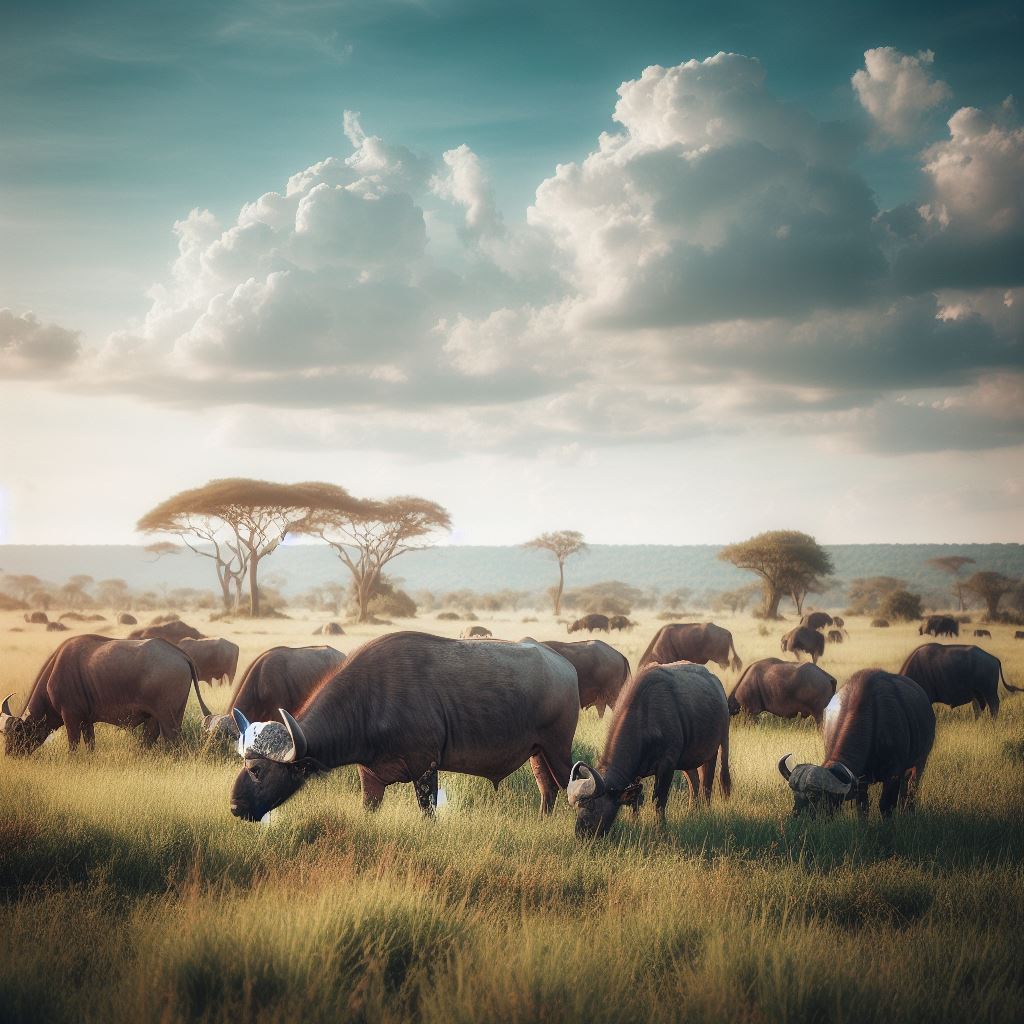
Here we are, cobbers, gettin’ a close up of one of Africa’s most formidable animals, the Cape Buffalo! No joey stuff here, mates, this fella’a a full-blown badass superstar of the African savannah. Not just a regular buffalo, no siree, they’re more like a muscle-bound muscle car of the animal kingdom, with a temper to match. Don’t get it mistaken for its distant cousin, the water buffalo, ’cause your day’ll go from fair dinkum to bloody awful in the blink of an eye!
A Beast Built for Survival
Up front, they’ve got a set of horns that’d make a hat rack jealous. Towering head gear that screams ‘do not disturb’ in 100 different ways. Their skull, built like a tank, can withstand the charge of a bloody rhino! Weighing in at sometimes over a ton and standing 1.7 m high at the shoulders, these beasts ain’t no pushover! They’ve got the heft to back up that hard-headed bravado.
One Tough Cookie
Even big cats like lions tread carefully around a Cape Buffalo. You wouldn’t want to ruffle their fur the wrong way, or you’d be on the receiving end of a charge that’d make a freight train envious! A lion may be king of the jungle, but even they’d have a tough bug to crack when takin’ on a fully grown Cape Buffalo. Their herd mentality makes them super protective; if one’s in trouble, the whole crew turns up!
Devoted Parents
Despite their fearsome reputation, Cape Buffalos show a softer side when it comes to their young. They’re past masters at parenting, nurturing their calves with the same intensity as they’d confront a predator – full-on and no holds barred. If a calf’s in trouble, the buffalo’s parental instincts kick in something fierce, making them an even more formidable force to deal with.
Resilient Despite the Odds
Even disease ain’t a patch on these fellas! Ticks, dystocia, foot and mouth disease, and corridor disease – the Cape Buffalo can weather them all. Their bodies are fortress-like, capable of tackling threats that’d wipe out lesser creatures off the face of the earth. Even in face of drought, they don’t just fold up and quit. No way, Jose! They’ve got the guts to push through, finding water and grass to sustain them, no matter the odds.
More than Just Muscle
Brains and brawn is the game for these fellas, each herd led by experienced and intelligent bulls who know the ins and outs of surviving the savannah. They lead with wisdom and strength, safeguarding their herd from danger and guiding them through harsh terrains with an uncanny sense of direction and purpose. Truly the Cape Buffalo is a badass not just in strength, but in spirit and will to survive!
Stepping foot onto the African savannah, the Cape Buffalo commands respect and a healthy dose of caution. It embodies the raw, unadulterated power of nature, a living testament to survival against the odds. Underneath that rough exterior is a creature of immense strength and intelligence. So next time you’re flipping through a wildlife book and you spot our mate, the Cape Buffalo, give a nod to one of nature’s fiercest warriors.
